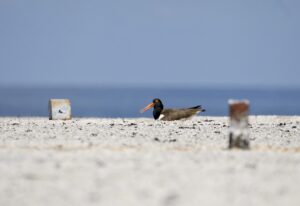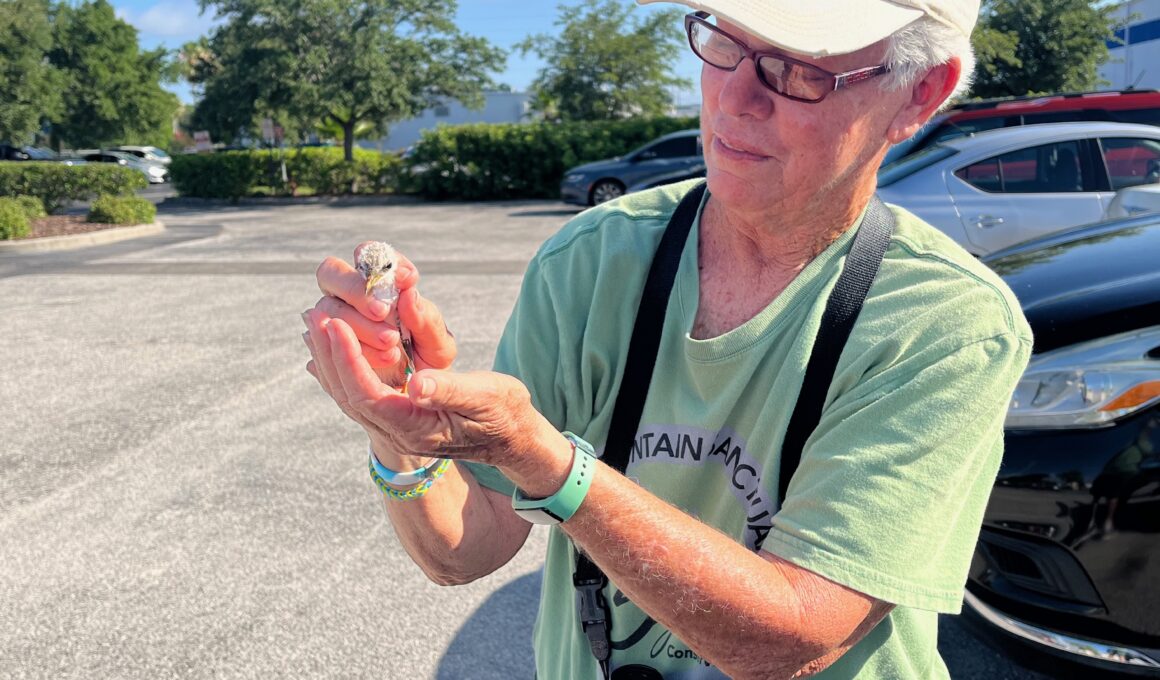Almost everyone who wins a major award expresses their total surprise at the honor, but Wendy Meehan was even more shocked than most when she won Audubon Florida’s Volunteer of the Year Award at the statewide convention held last month in St. Petersburg.
“Birding is always such a pleasure and I learn so much – but I didn’t even know this award existed until I won,” says Meehan. “Wendy is always willing to help, even at the last minute,” adds Kara Cook, Audubon’s Suncoast rooftop biologist, who nominated Meehan along with Holly Short, Audubon’s shorebird coordinator.
It’s practically a full-time job for Meehan, who retired in 2009. Summertime is rooftop monitoring, to check on the chicks who are hatching on white roofs in Pinellas County because they’ve been crowded out of their favorite beaches. Come fall and winter, Meehan monitors 10 bald eagle nests and reports sightings of banded birds spending their winters on Pinellas beaches.

She’s less clear on the numbers than Cook, who can document her accomplishments much more effectively than Meehan’s more modest counts:
• 17 years as a rooftop monitor and beach-nesting bird steward
• 10 years as an Eagle Watch volunteer
• Over 5,000 banded birds reported as resighted
• Regular participant in the St. Petersburg Christmas Bird Count.
The rooftop monitoring may be Meehan’s favorite activity because it saves the lives of birds, including American oystercatchers and least terns. Most of the flat, white gravel rooftops in Pinellas County are used often and have had “chick fences” installed along the edges so chicks don’t run off the roof if they are flushed by a predator.
Birds on roofs that haven’t been outfitted with fencing, however, need chick-checking several times a day during nesting season that starts in mid-March. “Most of the birds are fairly young and wouldn’t be able to get back on the roof by themselves,” she said. “We use a ‘chick-a-boom’ so if we see a downed chick we can put them back up safely.”
This time of year, Meehan is monitoring her eagle nests (part of Audubon’s Eagle Watch) and surveying local beaches for banded birds. “She’s on the beach before most people are even out of bed,” quips Cook.
“I’m retired so this gives me a sense of purpose and a reason to get out of bed every morning,” Meehan adds. “It’s great exercise and getting out into nature is a huge benefit for me – and a chance to forget all the discord in the world and make a difference for good.”


